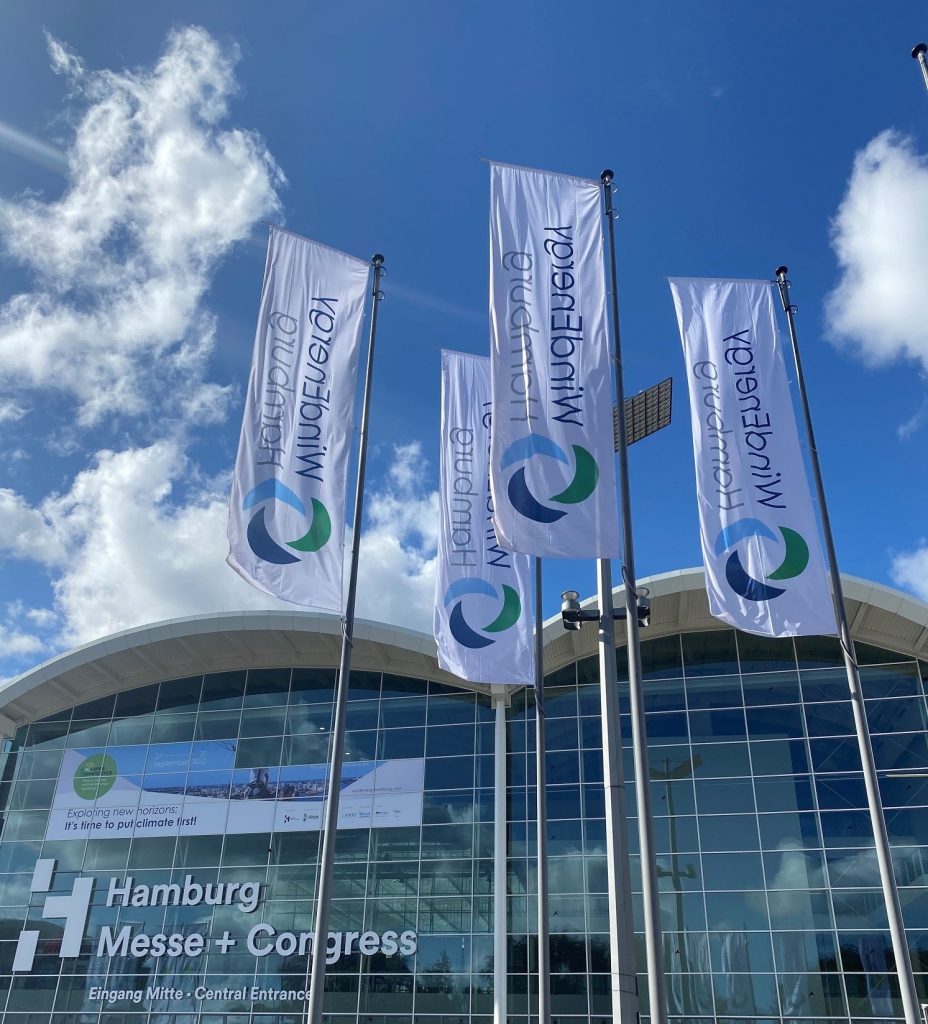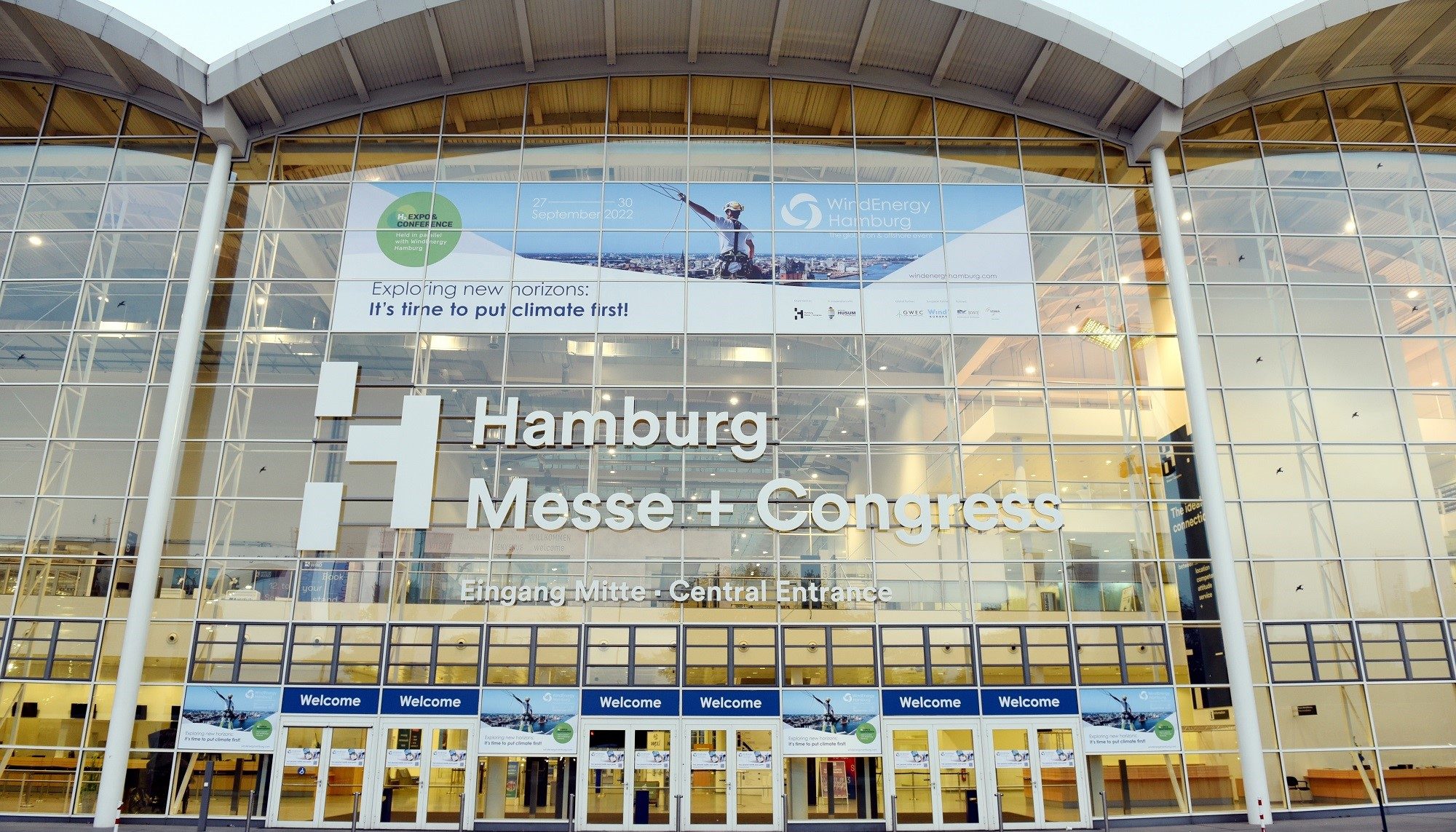From equipment and component manufacturers to project developers and operators, and through to scientists and politicians, WindEnergy Hamburg, held from 24 to 27 September 2024, will the meeting place of the entire international wind energy sector. Repowering, grid intertie challenges and new energy storage solutions are at the top of the agenda.
The goal is set: By 2030, the EU wants to have 425 gigawatts of wind energy generation capacity in place, with two thirds contributed by onshore units. To date, however, Europe has installed no more than 272 gigawatts (79 per cent of which are onshore turbines). So to achieve the 2030 goal, it will be necessary to install an average of 33 gigawatts every year. “We can only reach this by maximising our expansion efforts. One key means to that end is repowering – replacing wind turbines that have reached the end of their lifespan with more powerful models,” explains Claus Ulrich Selbach, Business Unit Director Maritime and Technology Fairs & Exhibitions at Hamburg Messe und Congress. A joint EU directive facilitating wind energy projects has improved the conditions for the construction of additional high-output wind farms.
At WindEnergy Hamburg in September, decision-makers will be able to meet the right partners for implementing repowering projects. One of them is the Norwegian wind energy company Statkraft which intends to modernise 35 older wind farms it has acquired in Germany. “A major portion of the energy transition on shore will be accomplished through repowering projects,” states Stefan-Jörg Göbel, Statkraft Country Manager in Germany. A wind turbine erected 15 years ago typically has a capacity of 2 to 3 megawatts. By comparison, the latest-generation turbines designed for onshore use have a capacity of 6 to 7 megawatts.
More power, larger components
These state-of-the-art units are more powerful but also significantly larger than their predecessors. Over the past 30 years, the hub height has tripled. And while in 1980 a typical rotor had a diameter of 15 metres, this dimension is expected to increase to 250 metres by 2035. At WindEnergy Hamburg, experienced logistics companies and heavy-lift specialists such as Eager.One, Liebherr, Schmidbauer and Gruber Logistics will showcase solutions for handling these oversized items safely.
But repowered wind turbines not only come with logistical challenges. Their higher energy output also requires smart grid feed-in management as well as innovative, high-performance energy storage technologies. For exhibitors addressing this field of expertise, WindEnergy Hamburg will lay out a dedicated Storage Tour at WindEnergy Hamburg. “The Storage Tour will allow visitors and exhibitors to locate all companies dedicated to this complex topic at a glance, and speak with them directly,” says Andreas Arnheim, Director WindEnergy Hamburg. Exhibitors will include Avacon, GP Joule, OAT and many others.

Grid operators and governments under pressure to act
Upgrading the electricity distribution network is a top priority. The energy transition cannot succeed unless new wind farms can be tied into the grid quickly, and the power they generate can be distributed as needed. “It is now up to major grid operators as well as governments to accelerate their infrastructure projects. As the world’s leading expo for wind energy, we are the right meeting place for the industry. We set the stage for the market stakeholders and facilitate networking and interaction,“ says Arnheim.
A total of 150 conferences and panel discussions featuring renowned speakers will take place during WindEnergy Hamburg. They will play a key role in moving things along. For example, there will be events focused on equipment engineering, regulatory matters, finance, grid engineering, supply chains, digitalisation/AI and project planning, among others. The stages will be accessible to trade fair attendees free of charge.
About WindEnergy Hamburg
Every two years one of the most fascinating industries meets for the leading global networking event for wind energy: At WindEnergy Hamburg, which takes place right in the heart of the vibrant northern German port city, around 1,500 companies from 40 countries present their innovations and solutions in ten exhibition halls to up to 40,000 visitors from 100 different nations. Covering 73,500 m² across the exhibition campus, equipment manufacturers and suppliers representing all stages of the onshore and offshore wind energy value chain provide a comprehensive overview of the market. The trade fair will be accompanied by conference sessions where top-ranking experts address the industry’s current key topics. The WindEnergy Hamburg team develop this programme jointly with their partners, including the Global Wind Energy Council (GWEC), the European organisation WindEurope, the national industry associations VDMA and BWE, leading industry media, and companies from the wind energy sector. From 24 until 27 September 2024, all conference sessions will take place free of charge on five open stages located inside the exhibition halls.
Contact
Uta Westermann
Press & PR
Tel. +49 40 3569-2098
Fax +49 40 3569-69 2098



























